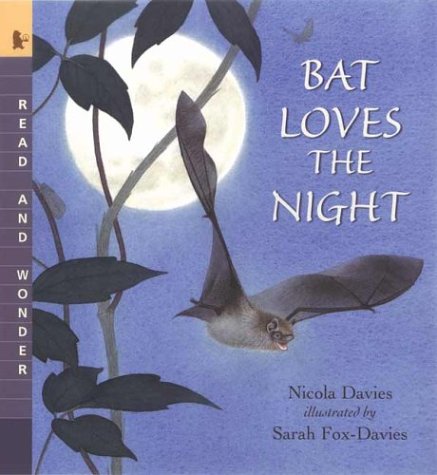
Students in my writing workshops use close reading as a way to learn writing—with no particular directive from the first Common Core Anchor Standard. Through close reading, students analyze the writing style and techniques of their favorite authors. When students discover something that catches their attention, they discuss it with their classmates or write about it in their learning logs.
Here’s how a discussion of the book Bat Loves the Night went during a recent workshop. Notice how the students directed most of the conversation:
Andy: See where she says, “Bat is at home in the darkness/as a fish is in the water”?
Jesus and Kathy: Yeah.
Andy: She is comparing how a fish feels in water to how a bat feels in the darkness.
Kathy: Yeah. I get it.
Andy: Then she explains why: Bats don’t need to see because they can hear where they’re going!
Mrs. Nathan: As I’m listening to you, I’m wondering what you’re learning about writing. Any ideas? Jot down two or three things in your logs; then we’ll talk.
Sample learning log entry (with spelling and punctuation corrections): When she compared the bat to a fish, it worked, so I could do that, too—use comparisons, I mean. She didn’t leave me hanging. I wanted to know why bats don’t NEED to see. Explaining things is important when you write!
Steps for Using Close Reading in a Writing Workshop
You can make close reading a part of your own writers’ workshop by following these steps:
- Identify your objective for close reading (rereading with a purpose in mind). In the lesson above, the purpose was to give students time to think about how the author of Bat Loves the Night builds meaning. One way was through using a simile; the other was through a tightly structured explanation.
- Choose your text. I chose Bat Loves the Night because of the ways the author illuminated new concepts through figures of speech (simile, metaphor, explanation, structure, etc.).
- Decide how students will access the text. We read Bat Loves the Night in small groups. The particular group from above was asked to close read for ways the author clarified a difficult concept.
- Write a student-oriented purpose statement. I said, “Today, let’s read this portion about echolocation from Bat Loves the Night. Think about how the author helps us understand the concept of echolocation.”
- Generate text-dependent questions. I asked the students to put tiny sticky notes (one form of annotation) over things they thought helped them understand echolocation.
- Plan each of your readings so that students’ attention becomes more and more focused. For the sample above, students used annotations to locate the author’s craft. During a prior reading, their objective was to look for context clues for certain vocabulary words.
- Write an assessment and/or an extended meaning task. I asked the students to write what they were learning in their learning logs.
Reflecting on Close Reading During Writers’ Workshop
Practicing close reading is exciting because it requires deep levels of thinking: Students make judgments, detect shades of meaning, make inferences, draw relevant and insightful conclusions, and connect prior knowledge to other situations. It’s been my experience that students become fully engaged in close reading when they are learning and collaborating in a workshop environment. It seems, together is just better!
By Ruth Nathan, co-author of Writers Express
Want more information about writing workshops? Check out "7 Steps to a Great Writing Workshop."